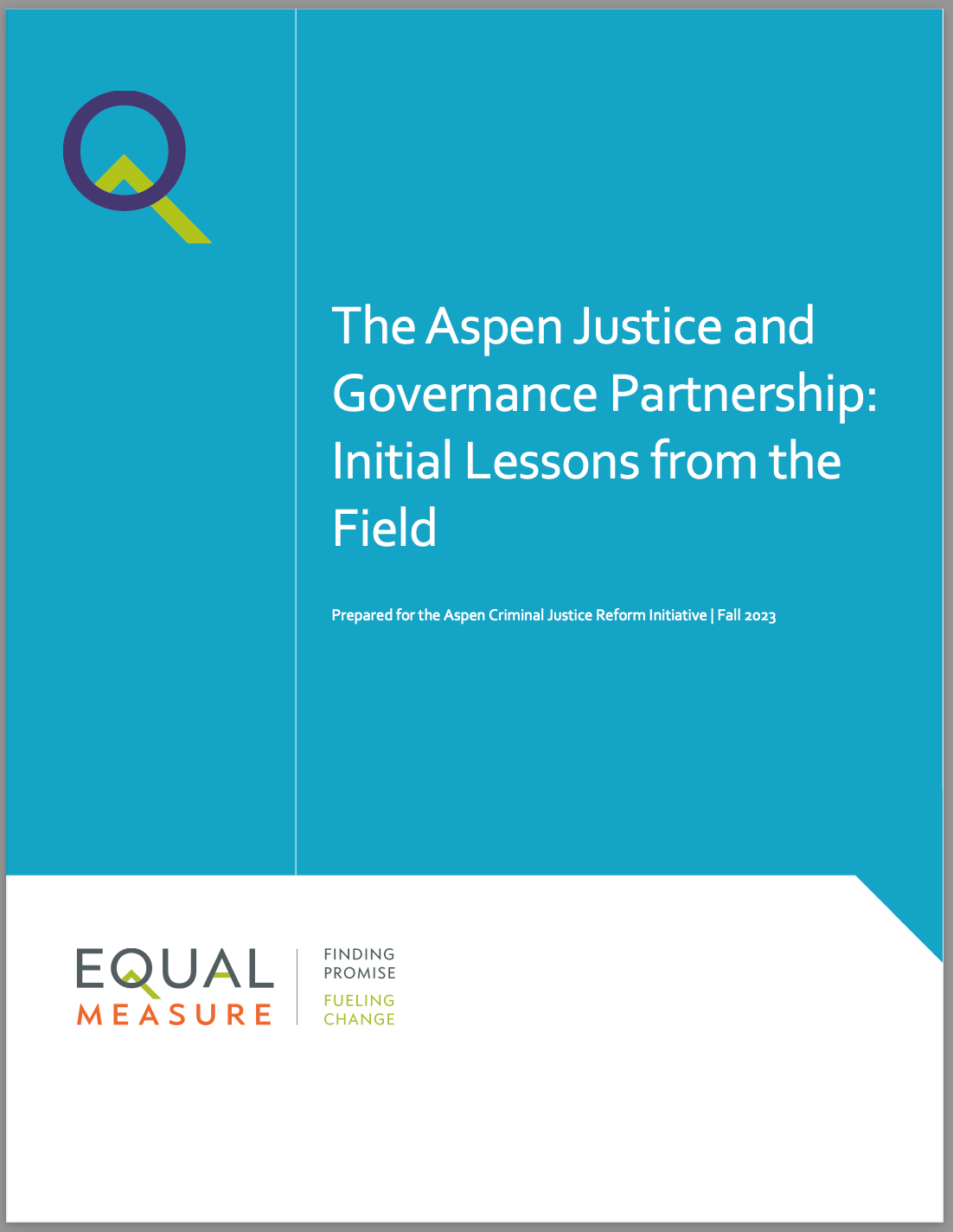Whenever I hear the word “audit,” I tend to imagine a hunched-over IRS agent thumbing through a flood of manila folders in search of fudged numbers. So when I heard that the Aspen Institute Criminal Justice Reform Initiative would be conducting “justice audits” as part of their Justice and Governance Partnership work in rural, small and mid-sized jurisdictions in the US, my reaction was, “How is that hunched-over IRS agent going to audit something as abstract and complex as justice?” It turns out that a tax audit and the Justice Audit couldn’t be any more different. The only thing they share is their love for one thing: data. Let me explain.
A Justice Audit is an analytical process that collects, renders, and interprets a vast array of data about the nature of justice in a community. But, unlike an AI combing through 1’s and 0’s, it also takes the public’s voice into account. The Justice Audit documents the perspectives of community members through interview data from people within the system (judges, police, prison wardens, and those who are detained) and through community-based action research approaches, the perspectives of community members about community safety, access to justice, and system legitimacy. This gets combined with more traditional sources of information like numeric data out of police and court databases. And a Justice Audit also looks to the ‘adjacent’ systems that interact with the Justice Systems – things like housing, health care, education, workforce, and others.
This myriad and variety of data create a more nuanced illustration of what might better be called the justice ecosystem. Similar to how analyzing an ecosystem in nature requires studying the relationships between different species, to decipher a community’s justice ecosystem you must understand how its different facets interact. Justice reform efforts sometimes only consider one portion of the Criminal Justice Continuum, when in reality all aspects are part of a larger, interconnected web where no piece exists independent of others. The Justice Audit also recognizes that the justice ecosystem, like any ecosystem, is never stagnant and is impossible to perfectly depict through data. In fact, it is designed to boost a locality’s analytical capacities so that they can repeat the Audit every year, to create a more just justice system based on actionable data.
Once the inner workings of a justice ecosystem are documented and made visible, then the narrative of how it operates begins to emerge. But rather than depicting that narrative in hundreds of pages and spreadsheets fit for our hunched-over IRS agent, the Justice Audit visualizes data in a way that can be understood and utilized by communities. The Justice Audit isn’t intended to provide a one-time diagnosis that instructs a locality on how to conduct themselves; its objective is to collaborate with the community and build upon their existing knowledge so that they can examine their justice system and intervene at the points where equity and efficiency fail. One unique feature of the Justice Audit is its ability to detect where practice in the justice system departs from policy and theory. Often systems and procedures that ostensibly serve their purpose are not examined beyond their surface-level appearance, allowing harmful flaws and shortcomings to remain unseen. But, through extensive analysis, these systemic pitfalls can be diagnosed and ameliorated.
Okay, sure, you say, but what does it actually look like? An earlier version of a Justice Audit was done in Cook County (Chicago), Illinois. One trend that the audit revealed is that fewer people are going to jail, but those who do are staying for longer. Here are the figures:
What’s Decreasing:
- Annual Admissions (by 49%)
- Daily population (by 24%)
- Felony Arrests (by 39%)
- Felony Filings (by 29%)
What’s Increasing:
- Length of Stay (by 53%)
- Felony Caseload (by 11%)
- Felony Case Length (by 51%)
- Time to Guilty Plea (by 33%)
So why did this happen? The Cook County Justice Audit posits that it was due to a change in the jail population and the handling of cases. According to the Audit, “As people convicted of lesser crimes are diverted from extended court adjudication and pre-trial detention, the jails hold a higher percentage of people who have been charged with more serious crimes,” and, “It may also be taking longer to adjudicate some types of cases as a result of shifting practices in court (among judges, prosecutors, and defense attorneys).” Discovering these kinds of complications allows residents, government leaders, and advocates to propose policy changes that disrupt the inequitable mechanisms of the justice system.
And while I now know that a team of people, led by Justice Mapping’s Eric Cadora, pioneer of the Million Dollars Blocks concept and of Justice Reinvestment approaches (and an original co-developer of the Justice Audit approach along with the international Governance and Justice Group), will be coaching jurisdictions in CJRI’s Justice and Governance Partnerships on these Justice Audits (and luckily not the hunched-over IRS agent I’d imagined), auditing justice still remains a complicated task. But through this holistic, data-driven, community-based approach, the lofty ambitions of the Justice Audit can be realized. What will drive the Justice Audit isn’t its cutting-edge technology, but the timeless notion that through knowledge and collaboration we can better understand and reconstruct the systems that fetter us all.
Willem Patrick is an Intern for CJRI and an undergraduate English major at Colorado College.

